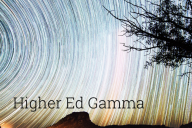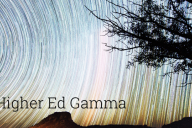You have /5 articles left.
Sign up for a free account or log in.
The conservative Manhattan Institute recently published a report that argues that the promotion of social justice ideology in K-12 schools and colleges is having a measurable impact on students’ political views and partisan leanings. The report claims that 93 percent of 18- to 20-year-olds have been exposed to various “critical justice ideology” concepts at school, including “white privilege,” “systemic racism,” “patriarchy” and the idea that the United States was founded on stolen land and that gender is a choice unrelated to biological sex—and that the more that students are exposed to these ideas, the more likely they are to lean Democratic and support affirmative action and other progressive causes.
The report’s authors are, of course, intentionally confusing exposure to important ideas and concepts with indoctrination, propagandizing and brainwashing. Except in a few isolated classrooms, that’s certainly not what’s taking place. Nor do the authors acknowledge that aggressive proselytizing of liberal and progressive pieties can sometimes push students to the right.
What we are witnessing instead is a culturewide shift in discourse. New ideas and terminology are clearly in the air, much as a very different set of ideas and vocabulary (largely from the Frankfurt School and scholars including Erik Erikson, Clifford Geertz and Erving Goffman) was circulating when I attended college decades ago. As the Manhattan Institute report suggests, these concepts are no more inescapable, at least on a college campus, than terms like “culture” or “total institutions” or “identity crisis” were during my undergraduate days.
I think it is fair to say that we are in the midst of a historic paradigm shift within the humanities and the interpretive social sciences. Often described in pejorative terms—as an embrace of wokeness or critical race theory or social justice ideology—I think it is better understood as a shift in focus and language. The shift is most apparent in various studies programs—American studies, animal studies, Black studies, cultural studies (and critical cultural studies and comparative cultural studies), disability studies, gender and sexuality studies, Latino/a studies, postcolonial studies, and women’s studies—but it is leaving an imprint on older departments as well, most obviously in English but also in anthropology, art history, ethnohistory, history, philosophy and religion.
This paradigm shift did not take place overnight. It is in part an outgrowth of the cultural, linguistic and affective turns that began to take root in the later 1970s, nearly half a century ago, when many of the concepts that roil today’s culture wars, including intersectionality and critical race theory, arose.
What has changed over the past decade is that:
- Partly as a result of generational and demographic shifts within universities, concepts and perspectives that existed at the academy’s margins moved increasingly to the center of campus conversations.
- A growing body of highly influential scholarship embodied and disseminated the new perspectives.
- Ideas and language previously confined to campuses started to percolate into the broader culture.
- Social movements that invoked these ideas and terminology gained in visibility and influence.
Much as Enlightenment ideas spread across the late 18th-century Atlantic world with the help of pamphlets, printed books, magazines and political songs and through literary salons, scientific academies, fraternal lodges and coffeehouses, we, too, have witnessed the circulation of new ideas and perspectives.
I recently read a sorely neglected book that came out shortly after the Sept. 11 terrorist attacks that helps to illustrate how this paradigm shift occurred. Timothy W. Luke’s Museum Politics urged his fellow political scientists to take museums seriously as sites of cultural contestation. This book asked why, in the 1980s and 1990s, many of society’s most bitter battles involved museum exhibitions.
As I’m sure many of you will recall, many culture war clashes of the Reagan, Bush and Clinton eras involved art and photographs—like those by Andres Serrano, Sally Mann and Robert Mapplethorpe—that conservative activists, clergy and politicians deemed pornographic or blasphemous. But other skirmishes involved history, like the conflict that erupted over the Smithsonian Institution’s proposed exhibit at the Air and Space Museum on the 50th anniversary of the end of World War II, which was to center on the detonation of an atomic bomb on Hiroshima by the Enola Gay.
Luke’s essential claim (which echoes arguments advanced somewhat earlier by the historian Edward T. Linenthal and the sociologist James Davison Hunter) is that museums, as contemporary American society’s cathedrals of culture, history, science, technology and natural history, serve as ground zero for political fights over national identity, the portrayal of the past and public understanding of science, technology and natural environment. No longer were museums regarded simply as vehicles of uplift, reflection, inspiration or edification and as repositories of priceless artifacts and artworks. Issues previously regarded as apolitical, such as how museums should interpret history or natural history or technology, had become politically contentious.
True to its title, Luke’s book uncovers and critiques museum’s cultural politics. He argues, for example, that the U.S. Holocaust Memorial Museum and the Los Angeles Museum of Tolerance’s audience engagement strategies undercut their purported mission of helping audiences understand the contexts and ideologies that contribute to genocide and the reasons why the United States failed to take effective steps to save more refugees.
In a later chapter, he argues that Los Angeles’s Autry Museum distorts popular understanding of the settlement and development of the Southwest through its intermixture of the mythic, the cinematic and the historic. Somewhat similarly, Luke raises questions about Phoenix’s Heard Museum’s efforts to allow Indigenous people to tell their story through words, art and artifacts, noting that the gift shop contained more items than were actually on display.
He also points to the incongruity of the Missouri Botanical Garden’s Victorian and Japanese gardens adjacent to south St. Louis’s sprawling railway yards, decrepit industrial factories and rundown houses and the Arizona–Sonora Desert Museum’s efforts to preserve a desertscape that is being disrupted by Tucson’s rapid growth. A particularly poignant chapter examines the now shuttered Newseum’s efforts to treat newspapers as authoritative, unbiased sources of information, just before the internet undercut the industry’s business model and undermined public trust in mainstream journalism.
Luke’s book was, of course, part of a broader Foucault-esque turn across the humanities and the interpretive social sciences to understand how power is mediated through culture, how cultural institutions shape collective values and social understanding and how cultural power is challenged, critiqued and contested.
As I look back upon the past four decades in the academy, I am struck by the degree to which Luke’s book’s emphasis on cultural politics, identity, power, resistance and agency has become a fixture in the humanities, institutionalized in various interdisciplinary studies programs but also increasingly implanted within many traditional departments. Again, we should view that not as wokeness triumphant but, rather, as a broader shift in scholarly focus.
This shift is, of course, partial and contested. It’s no secret that a significant number of colleagues in my department and elsewhere consider the cultural studies approach “theory-obsessed,” “jargon ridden,” “willfully obscure,” “simplistic and trendy,” and lacking in “rigor” and “depth.”
Yet it is also the case that even the most empirical and atheoretical humanities scholars have felt the influence of the cultural and linguistic turn. As Raymond Williams put it, there was a “a larger intellectual and cultural shift … from immediate experience to mediated forms of representation; from agency to discourse; from social history to cultural history; from recuperation to critique; from modernism to postmodernism; or, more broadly, from freedom to necessity.”
It is a tragedy that much of the public is largely unaware of many of the exciting new areas of inquiry pursued by humanists and their social science partners in arms: affect studies, animal studies, childhood studies, disabilities studies, museum studies, postcolonial studies, sexuality studies and the business, digital, environmental, legal, medical and technology humanities. To be sure, part of the problem is ideologues’ success in vilifying and caricaturing humanities scholarship as faddish, impractical and politically motivated claptrap.
But, I daresay, we also need to look at ourselves. We mustn’t abandon humanity’s great questions—about beauty, divinity, equality, evil, justice, meaning and the nature of the good life. We must also make our scholarship accessible and engaging and the popularity of recent books on the cultural history of food—of baguettes, beer, bread, chocolate, coffee, curry, gin, pickles, potatoes, rice, sugar and tea—demonstrates that this can indeed be done.
I myself find the humanities’ heightened emphasis on culture—including cultural diffusion, cultural appropriation, hybridities, syncretisms, cultural power, cultural contestation and cultural resistance—enormously stimulating. Ditto for the intense focus on identity—and the historical, political, social and cultural processes of identity formation and the impact of intersectional categories of class, ethnicity and race, gender, physical abilities, and sexual orientation on the nature, reproduction and persistence of inequalities and structures of domination, power and privilege.
The humanities have never been static, and the field’s future does not lie in its past. Resistance to change and innovation is, without a doubt, the path to stagnation and irrelevance. The vision put forward by number of my junior colleagues—a conception of the humanities that is more self-consciously political, more activist, more presentist, more attentive to issues of power and inequality, more focused on the voices and agency of the marginalized and more committed to community outreach—may not be everyone’s cup of tea. But the efforts to broaden the humanities, to encompass new subjects, to reach out more assertively and determinedly and think more comparatively and internationally, strike me as exactly right. That way lies the future.
Steven Mintz is professor of history at the University of Texas at Austin.



